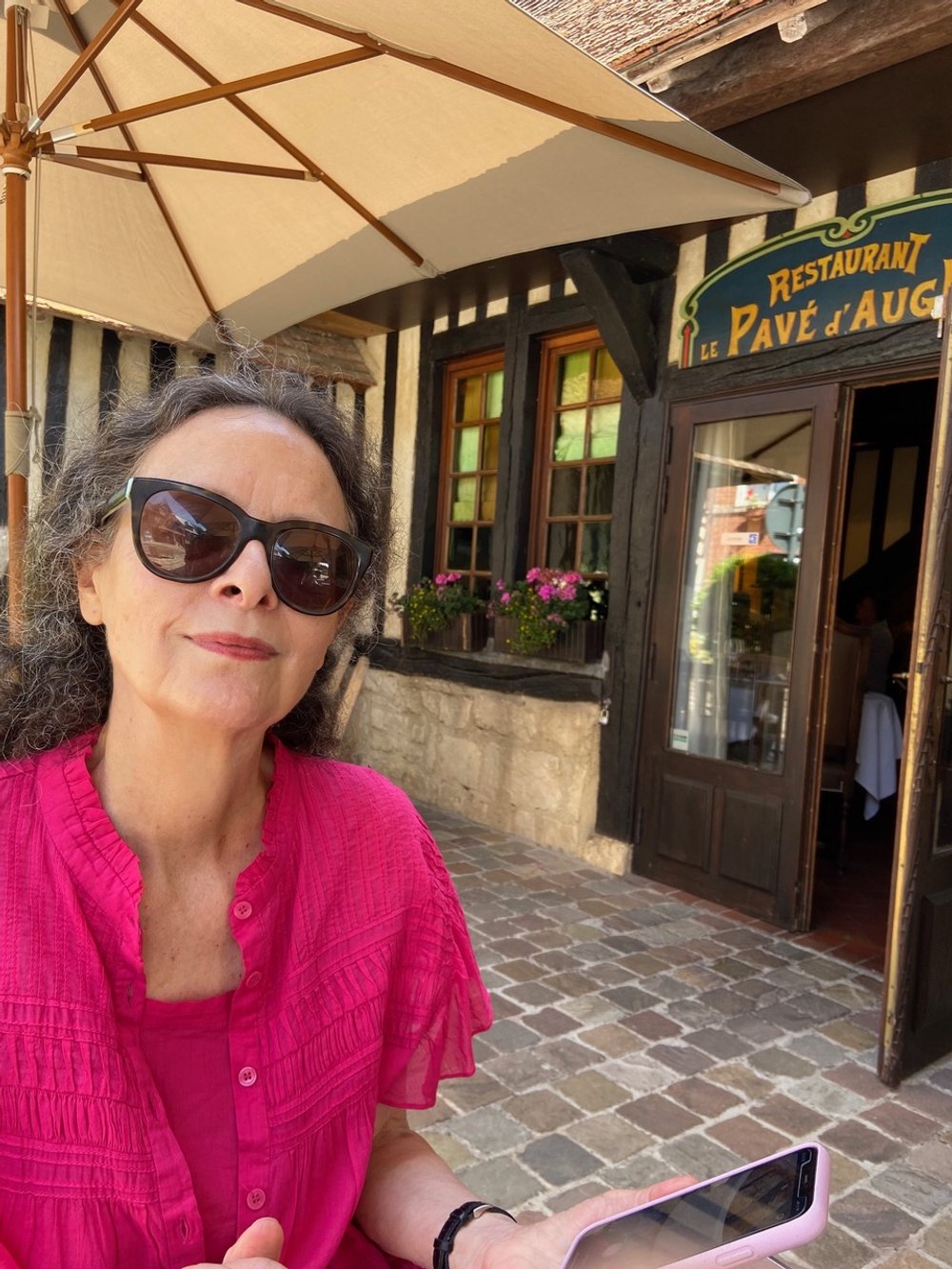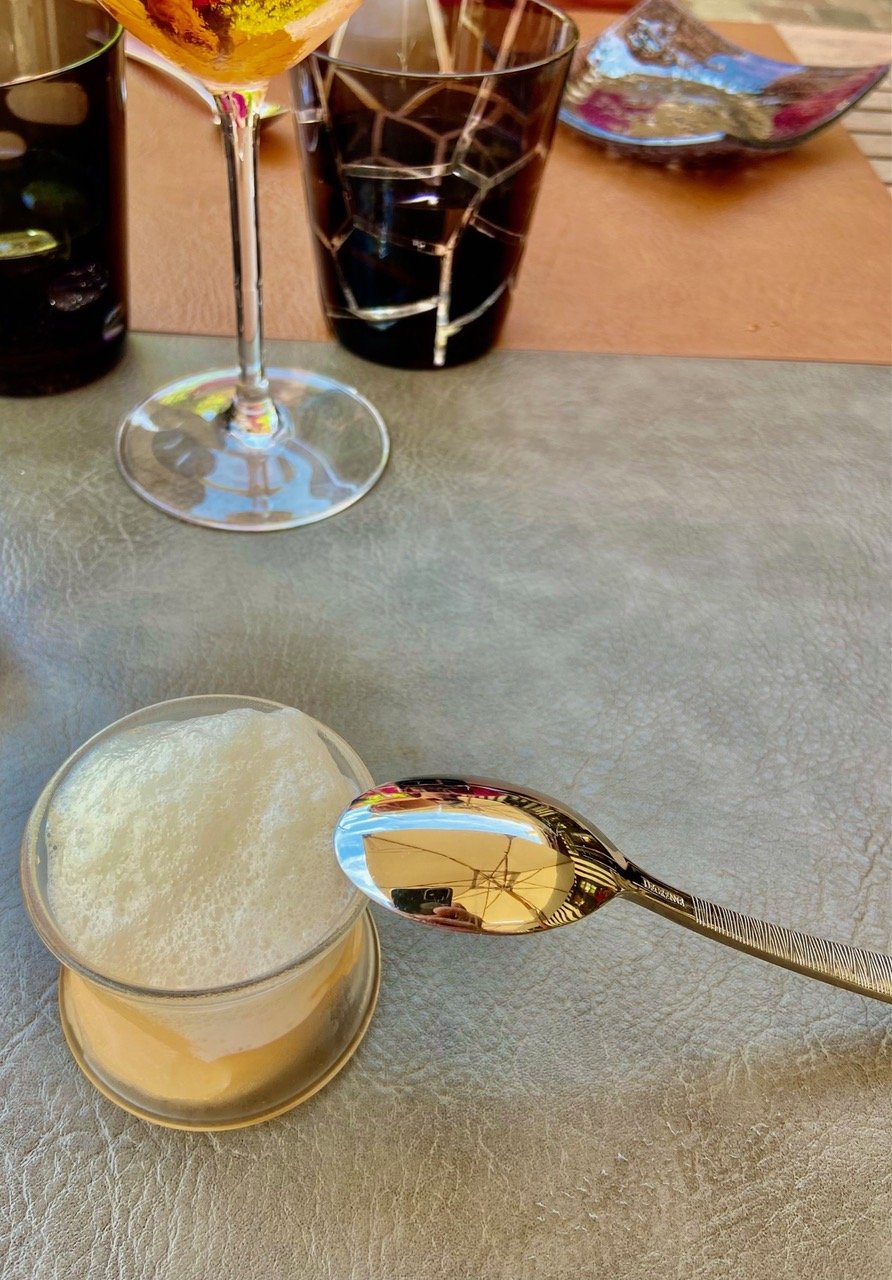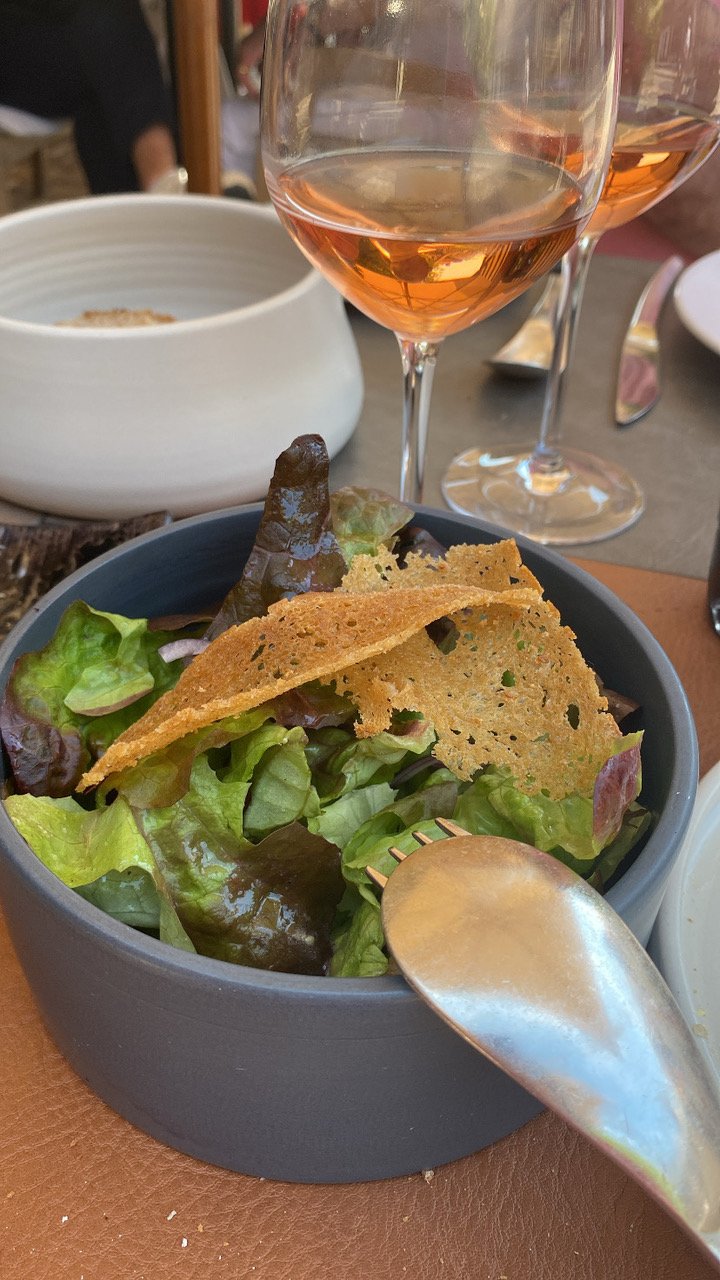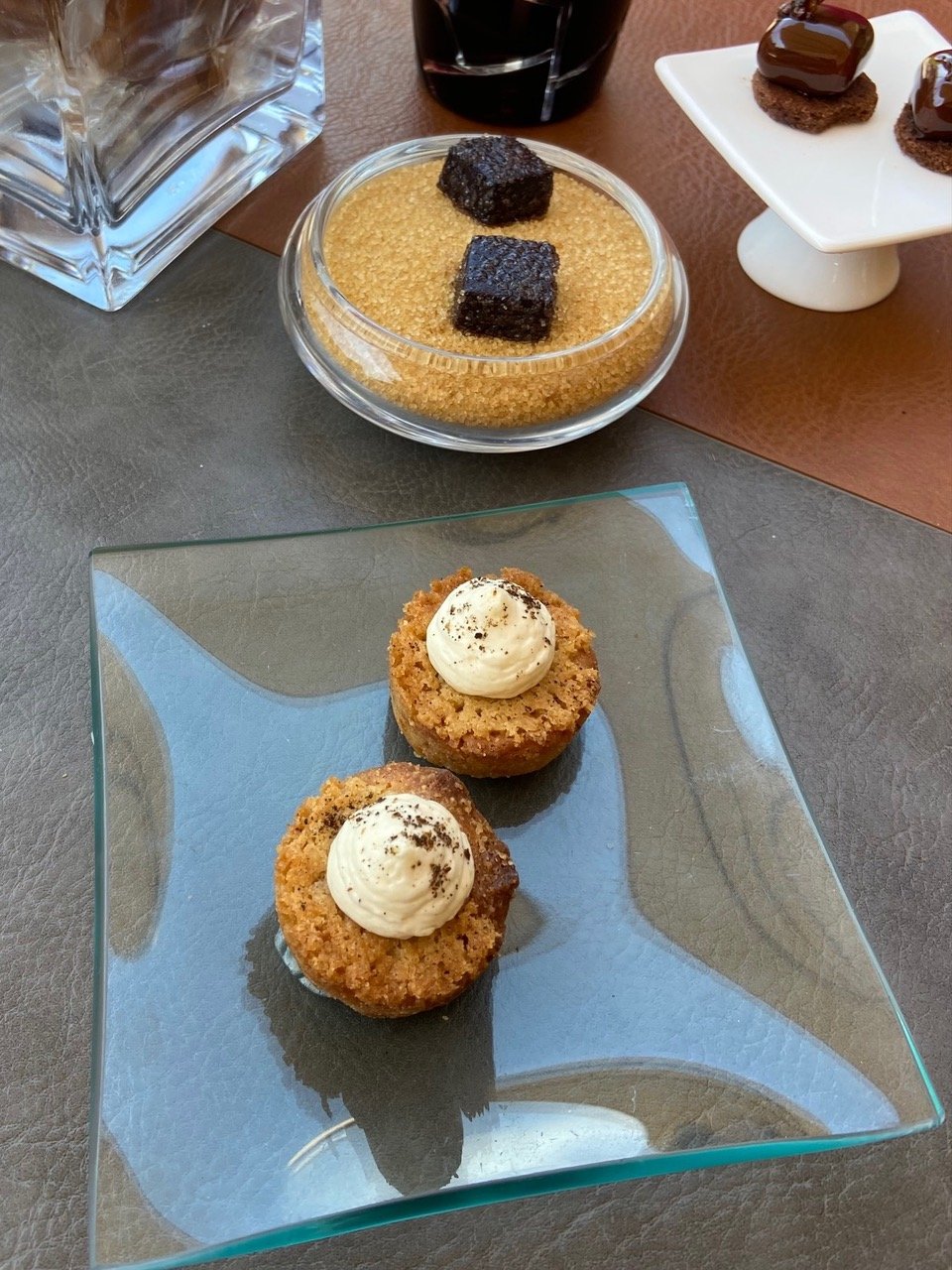What I Ate and Why I Ate It
Normandie & Bretagne
Ferme Saint Simeon, a simple auberge transformed into a 5 star Relais et Chateau hotel & restaurant
Bienvenue and welcome back to Musée Musings, your idiosyncratic guide to Paris and art. This week’s subject is the food of Normandie and Bretagne. It’s a little longer than usual but then again, it’s food!
When I was growing up, food was mostly the enemy. Which is to say, my mother’s impressive skillset did not include food preparation or food appreciation. She was a numbers person. The only numbers she associated with food were calories. Mostly she was on a diet, except when she wasn’t and then all the sacrifices she had made were canceled out by unwanted weight gain and remorse. It is said that remorse is better than regret but I don’t believe my mother ever regretted not eating something, filled with remorse as she was over what she had eaten but wished she hadn’t.
She definitely didn’t want me to follow in her footsteps. When I became a teenager, my mother’s most frequent question to me was, ‘are you sure you really want to eat that?’ And her most frequent display of affection was to stop my food laden fork before it reached its destination, my mouth.
My mother hadn’t been raised that way. My grandmother was a wonderful cook, a marvelous gardener and gifted seamstress as well as quilt maker. None of those skills did my mother (or her two sisters) appreciate or appropriate. I learned that food could be nourishing for the spirit and soul (as well as the body) from my grandmother. Who was soft and round. Thank goodness my family ate at my grandparents’ home once a week. Often dinner concluded with my grandfather’s speciality - killer apple pie - a deliciously rich all butter crust overflowing with thick slices of caramelized apples.
Still, when I started taking home economics classes in high school, as soon as we could choose between sewing and cooking, I chose sewing. The attention to detail was the same and the effort involved was, too. But you could only eat a meal once. Clothes could be worn over and over again. I’ve always been pragmatic.
All of this to say, that my own happy relationship with food didn’t really begin until I met my husband. The simple but sophisticated meals my mother-in-law prepared using local products from the farmers and fishermen she and I visited when my husband and I stayed with his parents in Maine, alerted me to the importance of buying locally and seasonally. When my husband and I began traveling internationally, first mostly to Europe and then, when we lived in Australia, to the Pacific, too, we tried new foods and different ways of preparing familiar ones.
Which is to say that Normandie and Bretagne were culinary destinations as well as art history ones for me. In between sightseeing, museum visiting and walking barefoot on the beach, I ate sophisticated meals at restaurants, simple meals at bistros and even simpler meals at home with ingredients I bought mostly at the marché.
I knew before I left Paris that I wanted to start my culinary adventure in Normandie with a sure thing, so I booked lunch at the Pavé d’Auge in Beuvron for my first day. The welcome was as warm as it had been in February. Although this time, it was cooling breezes on the terrace, rather than a fireplace inside. (Fig 1)
Figure 1. Me at Pavé d’Auge, yes it’s the same top, on two different occasions, but you’re the only one who knows!
As in February, as soon as orders were taken, the amuse-bouches began to appear. (Figs 2, 3) There’s no better way for the chef to welcome his diners than to send out gifts from the kitchen! As I chose my entrée, I spotted the foie gras I had enjoyed last time. (Fig 4) Although I was tempted, I decided to see how this Normandie chef prepared crab. It was described on the menu as 'Crab seasoned with lavender, blackcurrant and radish.’ (Fig 5) There was a time when I ate a lot of hardshell crabs. I remember one restaurant in Baltimore called Obrycki’s. And a simpler place whose name I don’t recall where the crabs were brought to the table on garbage can lids, accompanied by rolls of paper towels, a mallet and a bucket to put the empty shells in. This was not that. And yet, the crab salad was familiar, it reminded me of my mother-in-law’s lobster salad. The lavender and blackcurrant currents were subtle, the lemon and celery and mayonnaise pronounced. The dish was both delicious and familiar.
Figure 2. The first set of amuse-bouches. They tell you what they are but you forget while you are enjoying them!
Figure 3. This amuse-bouche was a frothy melon foam
Figure 4. The foie gras served at Pavé d’Auge, the menu gives the farm on which the duck who donated this liver, lived
Figure 5. A beautifully presented crab salad, sprinkled with lavender and blackcurrants, decorated with lavender
For my ‘plat’, I chose another familiar dish, magret de canard. (Fig 6) They say that in the Dordogne, people eat every part of the duck but the quack. When I’m in there, I probably eat duck once a week. When I prepare it at home, I serve it with sautéed apples and potatoes. Here the dish was described as, ‘Duck breast, gnocchi, rocket leaf (arugula) pesto, green peppers and pistachios.’ The gnocchi were a choice for the potatoes and the peppers and pistachios provided an interesting mix of sweetness and crunch. The duck breast was perfectly à point (rose interior).
Figure 6. A perfectly delicious slice of magret de canard with gnocchi, arugula pesto, peppers and pistachios
There is a book I read at the beginning of each of the 20 odd summers I lived in the Dordogne, Diane Johnson’s ‘Le Divorce.’ At one point, the 60+ year old lover of the 20 something heroine dates France’s decline to restaurant menus offering cheese OR dessert rather than cheese AND dessert.
I could have had a four course meal rather than a three course one, but I knew that if I ordered cheese and dessert, I would not be able to do either justice. I went with the cheese. Where better to begin enjoying the centerpiece of Normandie products than at a fine restaurant. Where the affinage (aging) of the cheese would be taken seriously and where the cheeses would be served perfectly ripe and ready to eat.
The ‘chariot of fromage’ (Fig 7) had five Normandie cheeses - Livarot, Camembert, Pont-l’Evêque, Neufchâtel and Tomme Normande, three of which (Camembert, Livarot, Pont-l’Evêque) I would encounter each time I ordered cheese that week. The portions were small (thank goodness) and after the waiter cut the cheese and transferred the slices to my plate, he plopped a spoonful of apple gelée in the center. Apples and apple cider and apple brandy (Calvados) are specialities of this region, too. The cheese course was followed by a generous bowl of salad. (Fig 8)
Figure 7. The five cheeses of Normandie, tomme is at the top, camembert is on the left …
Figure 8. The substantial palate cleansing salad that arrived just as I was finishing my cheese
I was already in Normandie when I found a post in my inbox from ‘Parisian Fields,’ an irregularly published blog written by “two Toronto writers who love Paris.” The post wasn’t about Normandie or cheese, but it did include a tasty tidbit about Camembert, taken from A Bite-Sized History of France: Gastronomic Tales of Revolution, War, and Enlightenment, (2018 Hénault & MItchell).
According to Parisian Fields, “During the First World War, Camembert… went from being a regional product little known outside Normandy and Paris to a cheese appreciated throughout France and abroad. French soldiers (poilus) received cheese with their rations, and at first the French government offered them mainly hard cheeses that had a long shelf life.…” Then Normandy Camembert producers began marketing their cheese. They decorated the small boxes in which the rounds of camembert are still packaged, with patriotic images, (Figs 9, 10) they kept prices low and they lobbied the French government to buy Camembert for the soldiers. And that’s how, according to Hénault and Mitchell, a regional, little known cheese, “became the daily cheese of the French soldier, most of whom had never encountered it before.…”‘Camembert de Normandie’ is made from raw, unpasteurized milk from Normande cows, that graze and produce milk in Normandie. Ad it’s a raw milk cheese, it’s not exported to the USA.
Figure 9. This camembert box celebrates the French soldier, ‘Le Poilu’
Figure 10. This camembert box was produced 30 years later, 80 years ago, to commemorate the Debarquement
I didn’t order dessert but I did order a café, which came with tiny mignardises and caramels. (Fig 11) A lovely way to end a meal and begin a holiday!
Figure 11. A sampling of mignardises, sitting in sugar are pâte de fruits and on the left, in the jar are caramels!
A few days later, I was in Deauville where I ate a quick lunch at Bouillon Mornay after a delightful walk along the beach and before I saw three temporary exhibitions at the Franciscaines. One of which was a Kusama Infinity Room. (Fig 12) For lunch, I skipped the main and went from starter to cheese course. The starter was one of my favorites, a frisée salad with a perfectly poached egg and extra thick chunks of lardon. (Fig 13) My cheese course was the trinity of perfectly ripe Normandie cheeses: Pont l’Evêque, Camembert & Livarot on a bed of lettuce, served with an excellent baguette.
Figure 12. Infinity Room, Yayoi Kusama, Franciscaines, Deauville
Figure 13. Frisée salad with perfectly poached egg (hiding) and extra thick lardon.
Besides the Pavé d’Auge, the restaurant at which I was most looking forward to eating was the Ferme Saint Simeon, the iconic residence of the impressionist artists, a short walk from Honfleur. As part of the celebration for the 150 anniversary of the first Impressionist exhibition in Paris, reproductions of paintings inspired by this spot are scattered throughout the garden. (Figs 14-16)
Figure 14. Panels with reproductions of paintings by Impressionist artists and where they were painted
Figure 15. The painting placed where the artist was standing and what he was looking at
Figure 16. And another enhanced by the living branches and leaves artfully growing around it
I ate at the Bistro Le Boucane where the 48€ fixed menu (lunch only Monday through Friday) is called, ‘Menu de la Mère Toutain.’ Mère Toutain was the woman who married the man who owned the farm which she gradually transformed into an auberge, offering room and board to travelers. The first artist who stayed was Corot, followed by Courbet and Daubigny who were followed by Èugene Boudin, who introduced the auberge to his friends, among them Monet and Jongkind.
The amuse bouche (singular) was only ech. (Fig 17) They should have skipped it, or I should have. Things improved with the entrée, ‘Maquereaux à l’oseille, crevettes grises en persillade, pomme de terre et citron,’ a fancy interpretation of one of Mère Toutain’s signature dishes, ‘le maquereau à l’oseille’ (mackerel and sorrel). It was very tasty, with the addition of baby shrimp and fried potatoes, all lightly flavored with lemon. (Fig 18) The plat was simply described as ‘Poulet vallée d’auge,’ and it was as simple as its name implies, although butter and hints of apple made it luxurious. (Fig 19) There was a cheese course, but unlike the Pavé d’Auge, the cheese was brought out already cut, as at the modest bouillon in Deauville. (Fig 20) I’m sure that at ‘les Impressionnistes,’ the gastrononique restaurant here, where 4 courses is 110€, there is a cheese cart, as one expects from a five star Chateau et Relais hotel/restaurant.
Figure 17. Amuse-bouche at the Ferme Saint Simeon, I think it was lentils
Figure 18. The entrée, Maquereaux à l’oseille, crevettes grises en persillade, pomme de terre et citron
Figure 19. Poulet vallée d’auge, the chicken was fine, the potato rounds were sensational, butter does that for a dish
Figure 20. The trinity of Normandie cheeses with a little lettuce and a dab of sautéed apples
The dessert, which I struggled to find room for was a buttery apple tart topped with vanilla ice cream (Fig 21). It reminded me of my grandfather (see above).
Figure 22. Dessert was a truly exceptional apple tart with a scoop of vanilla ice cream
The prices of wine and water were Paris prices. And when I got my bill, there was a 3,50€ surcharge. When I asked about it, the cashier said it was for the environment. She told me that she could back it out if I objected, which I did. It reminded me of shopping at Williams-Sonoma where they always ask you at the register if you would like to contribute to something. I always reply that I would be happy to contribute if they could confirm that Williams-Sonoma would be making an equal contribution. They can’t, so I don’t.
The most incredible meal, because it was so completely unexpected, was my modestly priced lunch (29€ for 3 courses) at Le Mancel, (Fig 23) the restaurant in the chateau at Caen, the chateau which also houses the museum I had come to see.
Figure 23. Le Mancel, the Restaurant du Château in Caen where you really must eat!
I hadn’t made a reservation at the restaurant and it was getting late for the lunch service but I was warmly welcomed. As soon as I ordered, I was offered a much more substantial (and interesting) amuse bouche than at the Ferme Saint Simeon. (Fig 24)
Figure 24. Delicious and lovely little amuse-bouche to start the meal at Le Mancel
My entrée was described as a “country terrine with Espelette pepper, sweet onion confit, market garden condiments (and) fried capers.” (Fig 25) The market garden condiments included tender baby nasturtium leaves and lightly pickled carrots.
Figure 25. Country terrine with Espelette pepper, sweet onion confit, market garden condiments fried capers. Le Mancel
My plat, “steamed sea bream fillet in Viennese crust, wild fennel, glazed fennel crumble, Nantes butter, fennel oil, Norman pissaladiere.” (Fig 26) was perfect slices of moist and tender fish on a bed of melted fennel with a delicious and rich sauce. The ‘Norman pissaladiere’ referf to the fennel melted in (Normand) butter. It’s a riff on a Cote d’Azur pissaladiere, onions melted in olive oil.
Figure 26. Steamed sea bream fillet in Viennese crust, wild fennel, glazed fennel crumble, Nantes butter, fennel oil, Norman pissaladiere. Le Mancel
I thought about a cheese course but with a dessert called, ‘Lemon meringue tart revisited,” my decision was made. (Fig 27) The lemon flavor was intensified by ‘lemon balm and lime gel’ and lemon and lime zest blanketing the plate.The cylinders of meringue on top reminded me of a fireworks display. It was truly spectacular.
Figure 27. Lemon meringue tart revisited. Everything you want in a lemon meringue pie and then some fun!
As each course, appeared I complemented the server. Finally, he asked if I wanted to meet the chef. Sure I did! Vincent Vidal has been the chef since January of last year. He is planning to grow herbs and vegetables in the chateau’s garden - the definition of seasonal and local. I read an interview in which Vidal said that his goals as chef here are to stay true to the essence of Normand products and to combine them with aromatic plants, rare spices and peppers from around the world - which has become the hallmark of his cuisine. Before the pandemic he was set to become the chef at a new restaurant in San Francisco. While that project is on hold, the chateau is benefiting from his creativity. I’m definitely coming back!
When I wasn’t eating at restaurants or bistros (which was most lunches) I was giving my palate and stomach a rest. The meals I ate at home were mostly simple because I was mostly not very hungry after those lunches. There was a very good fromagerie in Dives, where I bought camembert, livarot, neufchâtel and Pont l’Evèque, so that on the days that my lunch didn’t include a cheese course, I could have one for dinner! Like the primeur at the marché in Paris from whom I buy my fruits and vegetables, the woman at the fromagerie wanted to know when I would be eating the cheeses, so they would be perfectly ripe when I ate them. And they were.
That was Normandie. Brittany was a different story. I didn’t eat much because I was being poisoned by noxious gasoline fumes emanating from the basement of the house in which I was staying. Which was also why I woke up every morning with a headache. And why I cut my stay short. I stuck to traditional buckwheat crepes, filled with ham, cheese and a sunny side up egg. (Fig 28) But me being me, I did devote some time to taste testing Kouign Amanns, (Figs 29, 30) Brittany’s signature sweet. Which Wikipedia describes as “a round multi-layered pastry,..containing layers of butter and incorporated sugar, similar .. to puff pastry albeit with fewer layers.” This is what I discovered about me, the thinner the kouign amann, the better I liked it. It’s the caramelized sugar to pastry ratio.
Figure 28. Traditional Breton buckwheat crepe with a cup of apple cider
Figure 29. A shop selling Kouign Amann and Far Breton (like a flan with prunes)
Figure 30. Kouign Amines that I bought from three boulangeries in St. Malo.
I did buy Breton cookies (made with buckwheat flour) and caramels (Figs 31-34) which I will taste test with Ginevra. There’s one more thing, Foie de Morue (Fig 35) that I bought in a spice shop in St Malo called Épices Roellinger. I remember my husband telling me about the spoonful of cod liver oil he was given every day when he was a child. The tin I bought is the liver in its own oil. The taste is more delicate than foie gras de canard, closer to foie gras d’oie. Actually it tasted like fishy (in the best way) veal shank marrow. Since buying a tin at Roellinger (which has a shop in Paris), I’ve found foie de morue in my local Paris supermarket. I bought a couple of tins, for a taste testing with Ginevra when she gets here! Gros bisous, Dr. B.
Figure 31. Among the many Palets bretons there were to choose from in St. Malo
Figure 32. I’m not sure if the word artisanale is legislated but the Galland Palets on the right are definitely artisanal
Figure 33. A selection of caramel crèmes
Figure 34. The selection of crèmes and caramels I bought - for taste testing, of course!
Figure 35. Foie de Morue au citron from fabulous epicerie, Épices Roellinger, St. Malo
Thanks to everybody who sent Comments. I know my words about the American Cemetery were brief but there has been so much written about that hallowed place and the memory of the soldiers who lost their lives there that I wanted to share just images of that tranquil and terrible place.
New comment on Normandie on my mind (and Bretagne, too):
Dear Dr. B. Thank you for this recent offering. I have been to the American Cemetery three times and it is always serene and disturbing at the same time for me as a veteran. So many of the crosses are marked 'unknown'. The small museum always has interesting exhibits; the first time I visited there were several cabinets of communication equipment with explanations. My uncle was in the Signal Corps in Europe and North Africa during WW2 so the wind up phone packs and related items were familiar. St Malo is always stunning and I agree it is best at an off-season if there is such a thing. I imagine once you arrived and settled in as a nun or a monk that you didn't go down very often as everything was hauled up for you. Medieval life has fascinated me for years. I admire Lee Miller and I have wondered why there hasn't been a movie or documentary about her as only one of four women allowed to accompany Allied forces. Her pictures of St. Malo during and after the battle there are quite striking and it seems as if she was in complete danger taking them. Our guide at the time I was there didn't emphasize how destroyed the town was. Thank you, Dianne
I enjoyed your reviving memories of holidaying in Normandy at Houlgate and enjoying so much in the area. You do pack a lot in! Katherine, Oxford, England
This is perhaps your finest gift to us with all its variety of water, foods, galleries and personal treasures. Do you think of publishing your writing to us? I have to allow at 30 minutes to view each because I keep going back to see and follow your explanations. Are you having as much fun as we are seeing the images and reading what you wrote, Harriet, Boston
Truly amazed at your stamina in covering so many areas and villages. Most pleased that you visited the cemetery at Omaha Beach as a most meaningful visit especially when you look at the birth dates realizing that so many were so young. Plus the sacrifice of the Company A, 116th Regt., 29th Division in the first wave that KIA over 20 men, all residents of Bedford, VA>>>thus having the distinction of the one USA community with the highest % per capita. Naturally, the dreaded telegrams started to arrive in late June at the telegraph office in Green’s Drugstore. The female operated would notify Roanoke office that she was ready to receive telegrams. But was astonished to receive NINE telegrams that one morning. Most were for farming families so she had to find men in Bedford with a car to deliver the ‘we regret…..’ She quit her job a couple days later due to the emotion trauma as everyone knew everyone in the small town of Bedford. Bill, Ohio


































